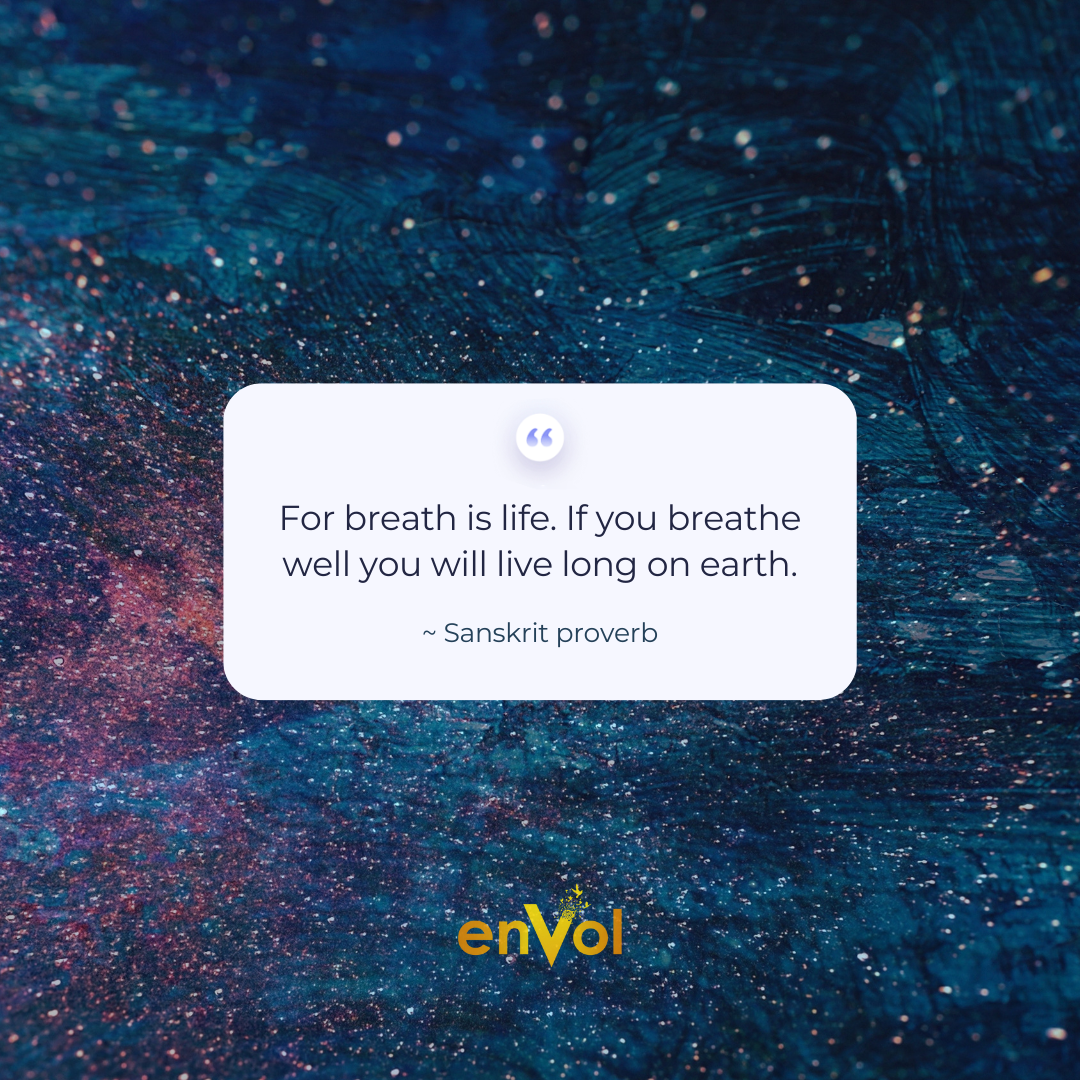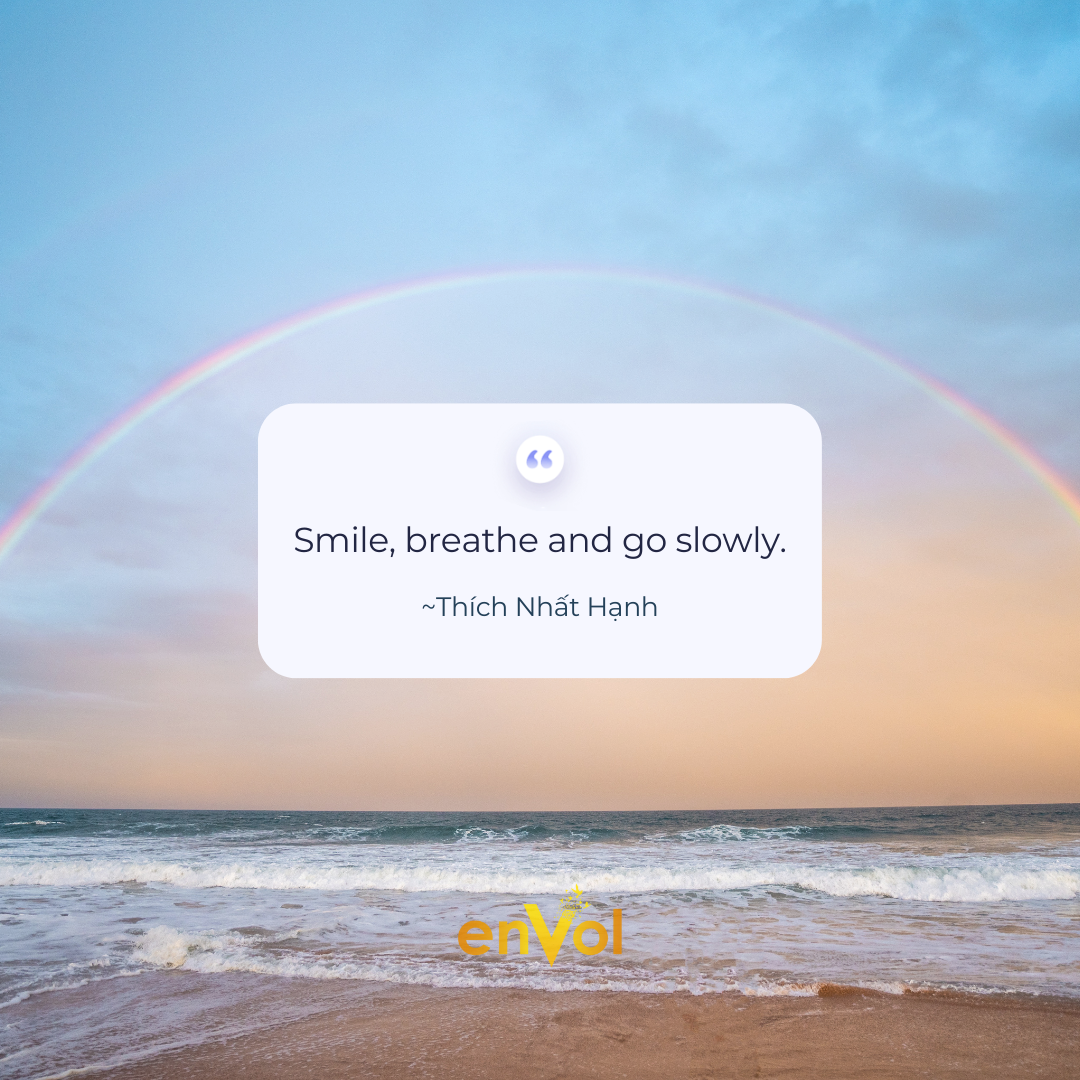Our bodies can survive about 30 days without food, less than a week without sleep, and 3-4 days without water. But the body can only be deprived of oxygen for 3 to 6 minutes.
Every cell in your body needs oxygen to function. Oxygen is the body’s main source of energy and plays an essential role in immune function and food metabolism; your body uses oxygen to transform food into energy.
You get the oxygen your cells need from the air you breathe.
On average, we breathe 25,000 times a day. Do you give any attention to how you breathe? How are you breathing on a daily, hourly, minute to minute basis? For most, breathing is a passive action done without conscious thought. Does how we breathe really matter? Do we really need to think about it?
Breathe your way to better health

1. The science of breathing
In his New York Times Best selling book, “Breath, The New Science of a Lost Art” James Nestor says:
"No mater what you eat, how much you exercise, how skinny or young or strong you are, none of it matters if you’re not breathing properly. The missing pillar in health is breath. It all starts there."
Turns out, not all breathing is the same; there is an optimal way to breathe. We can harness and influence our breath in order to achieve near super-human health.
In his book Nestor states that many modern-day maladies – asthma, anxiety, ADHD, psoriasis, and even conditions like scoliosis, osteoporosis and crooked teeth, can be improved or reversed simply by changing the way we inhale and exhale. The benefits of proper breathing are extensive and impressive. Proper breathing has also been proven to reduce blood pressure, boost athletic performance, nourish the brain and create a profound sense of Buddhist-like calm.
Changing how we breathe will even help us live longer. In the 1980s, the Framingham Study, a 70-year longitudinal research program discovered:
"The greatest indicator of life span was not genetics, diet, or the amount of daily exercise as many had suspected. It was lung capacity. "
And we can increase our lung capacity by learning how to breathe correctly. According to Nestor, 90% of us are breathing incorrectly. But how does breathing correctly actually look like?Let’s dive into the key factors for optimal breathing so that you can apply them to your own life and reap the benefits.
2. Breathe through your nose
Breathe through your nose. Do not breathe through your mouth. Why?
Mouth breathing puts the body in a state of stress, imbalances the nervous system, can significantly increase blood pressure, and make us more quickly fatigued. Mouth breathing also causes the body to lose 40% more water compared to nasal breathing.
In comparison nasal breathing will give you more energy, better sleep and a greater sense of calm.
What more, nasal breathing has actually been proven to make you smarter.
A recent Japanese study showed that rats who had their nostrils obstructed and were forced to breathe through their mouths developed fewer brain cells and took twice as long to make their way through a maze compared to nasal breathing control. Additionally, mouth breathing delivered a disturbance of oxygen to the prefrontal cortex.
In his book, Nestor states:
We can absorb 18% more oxygen [through nasal breathing] than by just breathing through the mouth.
Nose breathing is much more efficient for the body than mouth breathing; the bones at the opening of your nostrils, work together, to heat, clean, slow and pressurize air so that the lungs can extract more oxygen with each breath. Through nasal breathing, you more efficiently oxygenate, and therefore fuel the body.
During the day be conscious to breathe through your nose, as best as you can. Aim to also breathe through your nose at night, while you sleep.
Dr. Mark Burhenne, author of the book, “The 8-hour Sleep Paradox: How We Are Sleeping Our Way To Fatigue, Disease and Unhappiness,” has been studying the link between mouth-breathing and sleep for decades. He found that mouth breathing was both a contributor and direct cause for snoring and sleep apnea. He also found that mouth breathing contributed to gum disease and bad breath. And was the number one cause of cavities, even more damaging than sugar consumption, bad diet or poor hygiene!
He recommended patients gently tape their mouths closed at night to train their body to nasal breathe. If you’re interested in giving this a try, all you’ll need is a postage-stamp size piece of tape at the center of your lips. Nestor recommends 3M Nexcare Durapore “durable cloth” tape, an all-purpose surgical tape with a gentle adhesive.
3. Slow it down - less is more
The average adult breathes 12 to 18 breaths a minute. According to many breath experts, this is too much.
To optimize our health, we actually need to breathe less, not more.
Turns out, when breathing at this normal rate, our lungs will only absorb about a quarter of the available oxygen in the air. The majority of that oxygen is exhaled back out. By taking longer, slower breaths, oxygen becomes more bio-available for the body, and our lungs can actually soak up more.
Oxygen levels rise with slow breathing.
Patricia Gerbarg and Richard Brown, two renowned professors and doctors in New York, identified that the most efficient breathing rhythm occurred at 5.5 breaths per minute. That’s about up to 70% less than what the current American averages!
Gerbarg and Brown have written books and published several scientific articles about the restorative power of slow breathing, known as Coherent Breathing. The technique requires you to inhale for about 5.5 seconds, followed by a 5.5 second exhale, then repeat; this works out to 5.5 breaths per minute. It does not matter if you breathe at a rate of six or five second, or if you are half a second off, as long as breaths are within the range of 5.5.
4. How Envol can help
You can use the free breathing tool in the Envol app and give this breathing sequence a try: good news, we've already set it up for you: 5 seconds in, 5 seconds out, for 5 minutes - all you need is to press start. If 5 strokes feel too challenging for you, start with 3 second inhales and 3 second exhales, then gradually work your way to 5.5 seconds as you become more comfortable.
This resonant breathing proved to offer the same benefits as yoga, mediation and prayer; a sense of profound calm pervades. Through consistent practice, it can significantly boost your energy levels and increase your overall sense of well-being. The breath that enters your lungs affects every moment of your life; you can harness your breath to its full potential.

Want to explore more health and wellness content? Read some of our other amazing articles below:



